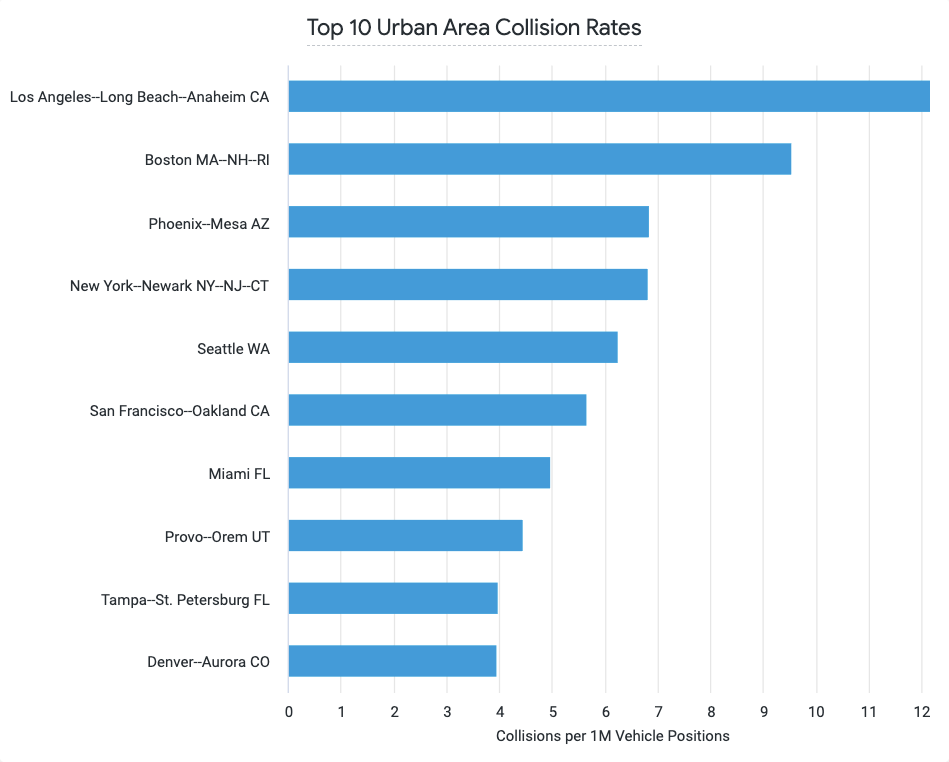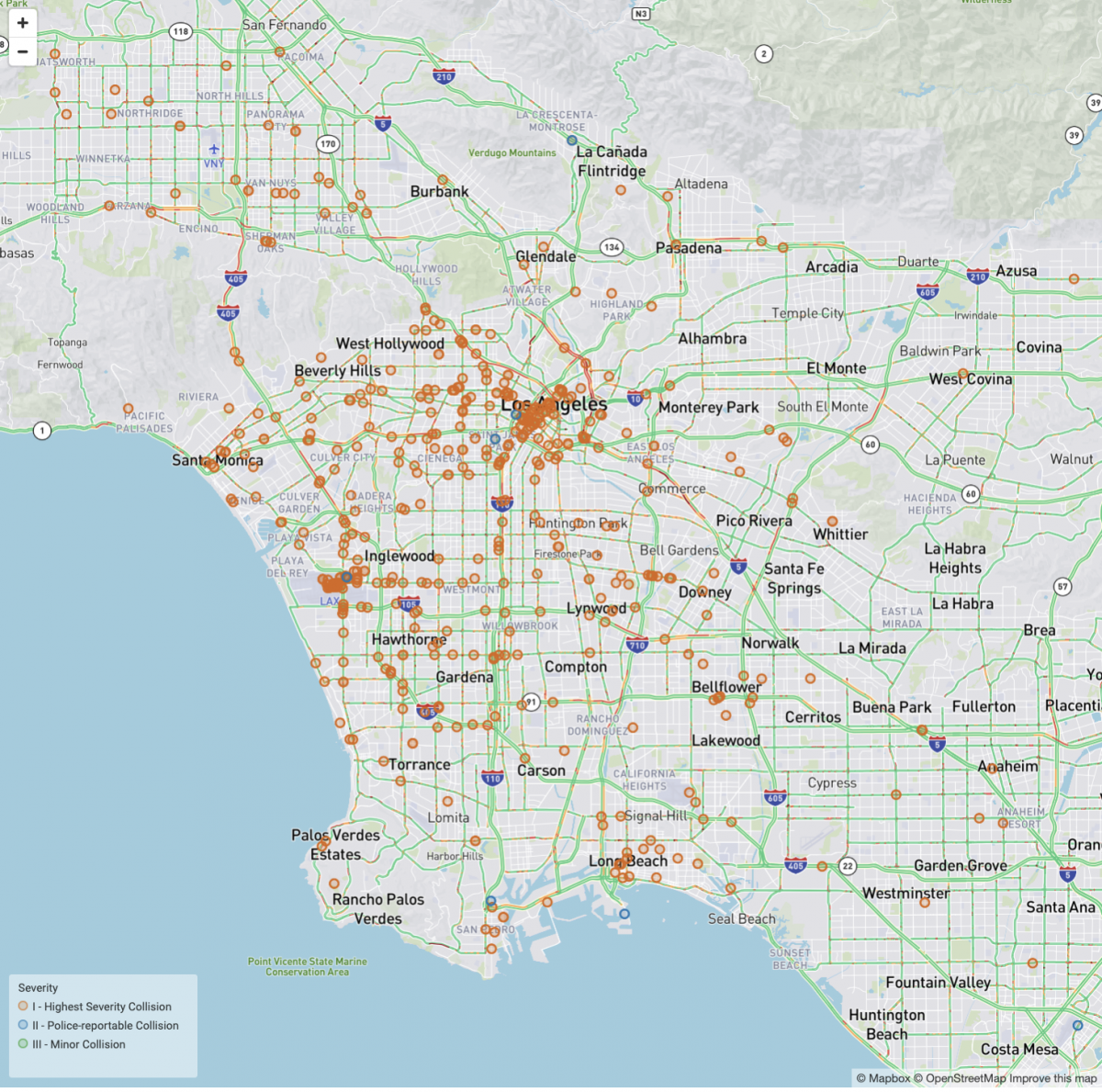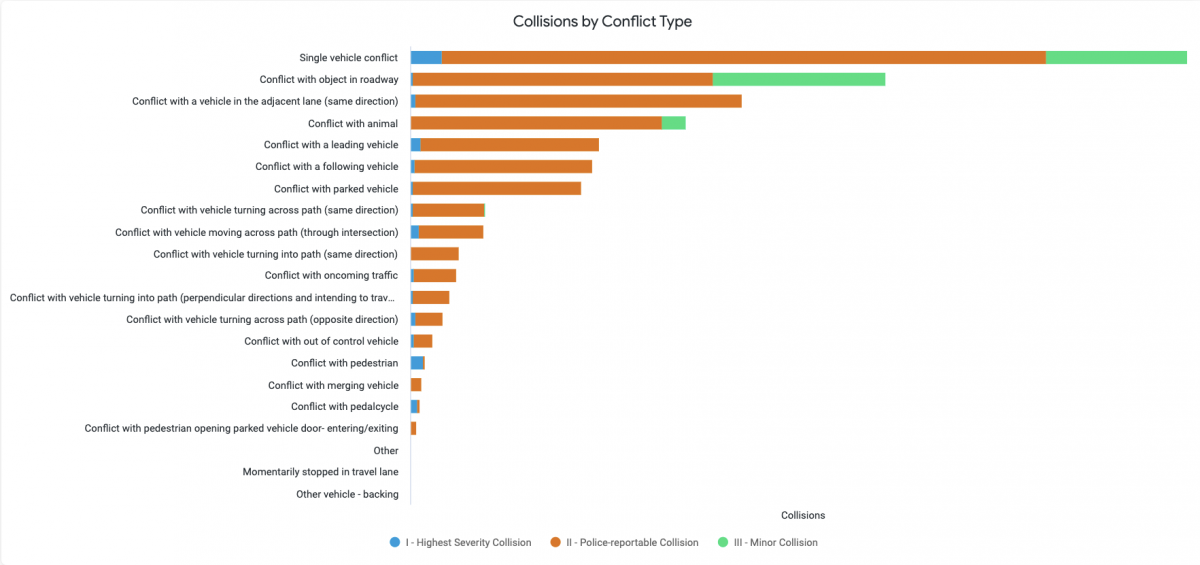
Collisions — dangerous for drivers and powerful catalysts for skyrocketing nuclear verdicts.
Prioritizing driver and fleet safety is paramount. In today’s digital and connected age, a severe collision could spell disaster for your business reputation. Although collisions may appear random, they often aren’t. Various factors, including congested traffic in urban areas and dangerous driving habits, are driving indicators that lead to many collisions.
To analyze collision insights for our customers, I explored our comprehensive culmination of SmartDrive data, which is comprised primarily of Class 8 and other vehicles. Here’s what I uncovered!
Top urban collision areas
Anyone who has frequented Los Angeles is probably not surprised that the Los Angeles metroplex is home to the highest frequency of urban collisions. Boston, Phoenix, New York City, and Seattle share the other top slots, respectively.
Highly-populated cities, like the cities included in the above figure, are — unsurprisingly — home to many cars, leading to congestion and all the accompanying components, such as cars driving bumper-to-bumper and stressed drivers.
Highest collision conflict types
There are so many ways vehicles can collide — and some of those ways don’t even involve other vehicles.
However, a single-vehicle conflict is still the highest collision type. Conflicts with objects in the roadway and animals are examples of leading conflict types that don’t involve other vehicles. The overwhelming majority of conflict types involve other vehicles, from vehicles in the adjacent lane to parked vehicles.
An important callout is a substantial majority of these collisions are police reportable. High-severity collisions are the lowest types of collisions, although they pose a serious risk to your operation.
How to secure your fleet operation and protect drivers
Safety managers can utilize industry-leading safety, security, and video solutions to eliminate risky driving behaviors with proactive coaching. Here’s how that works:
- Video technology and in-cab sensors are installed in the cab.
- As the driver continues along their journey, your back-office team is alerted to risky driving behaviors in near real-time, including harsh braking and swerving.
- Your driver receives a proactive alert to notify them of risky behavior, so they can correct their approach before it leads to a hazardous collision.
Additionally, you can gain converged and insightful data from current and previous trips to understand how safely drivers operate and which drivers to reward and train for a more holistic safety culture.
Thanks for reading! Continue prioritizing driver safety in your fleet with help from our data findings on hazardous locations. Read the blog article on the topic here.



